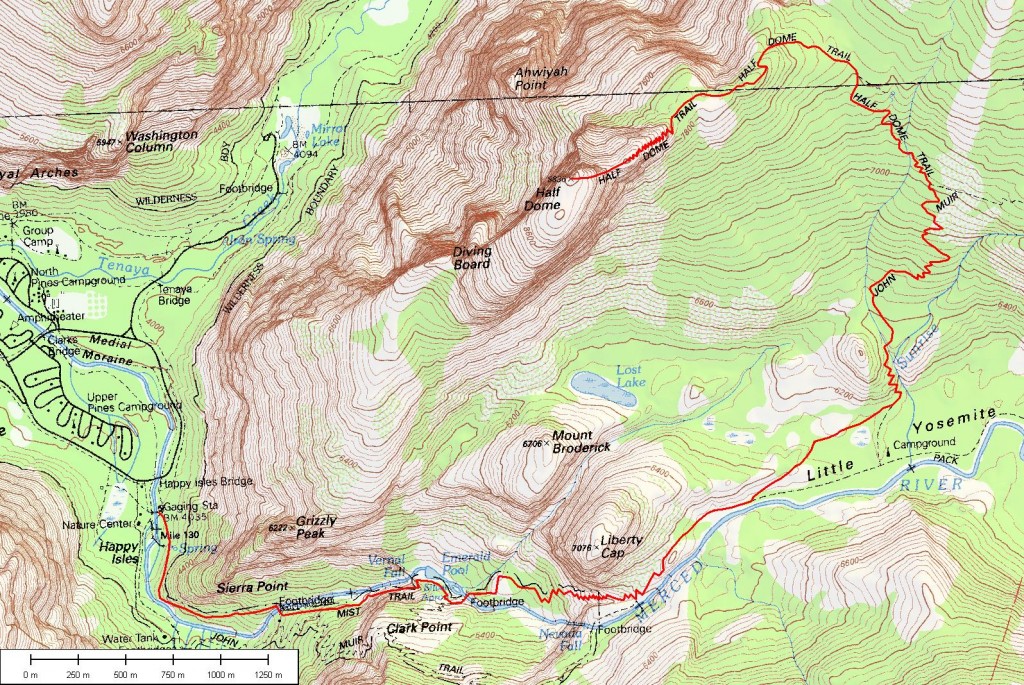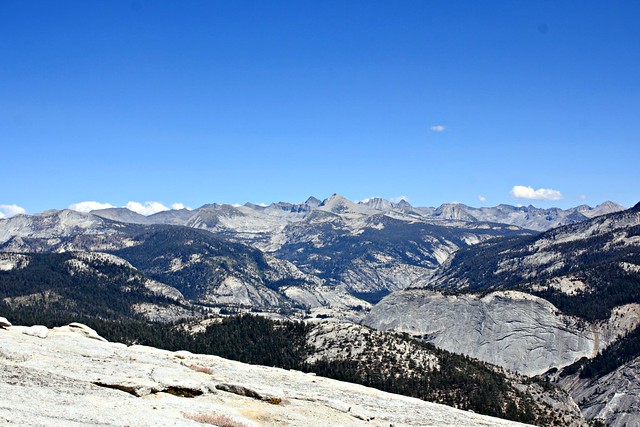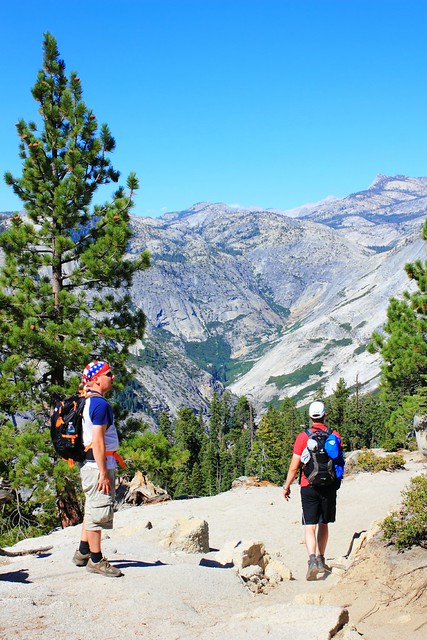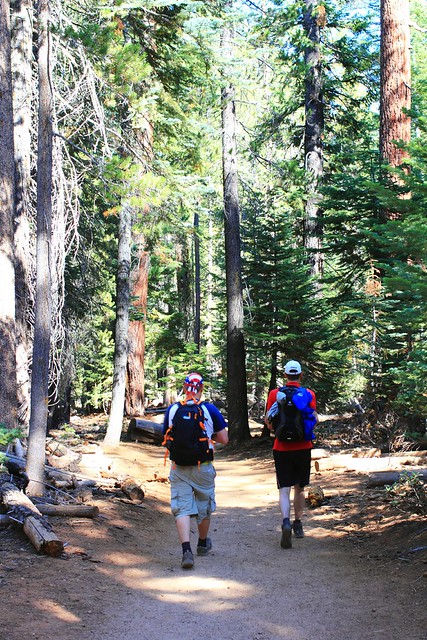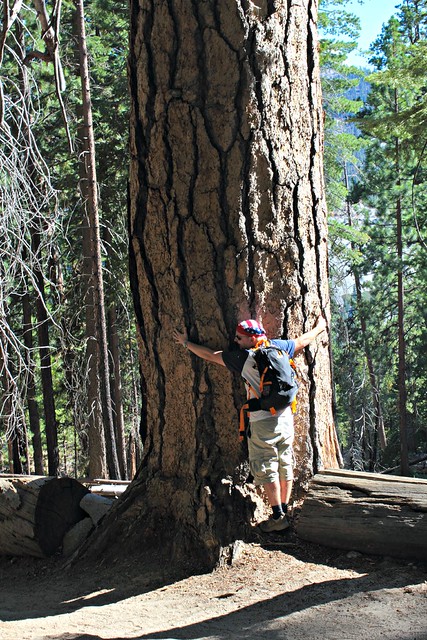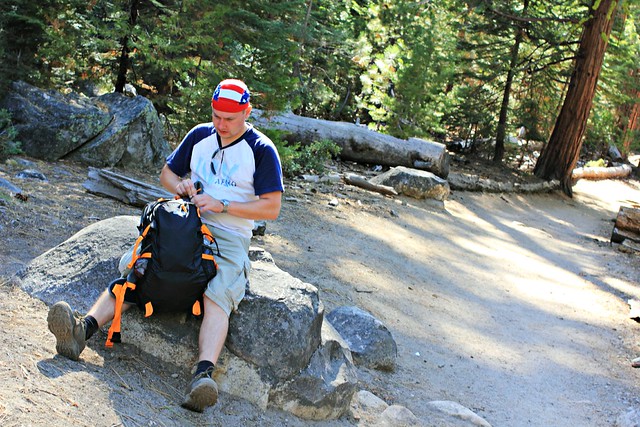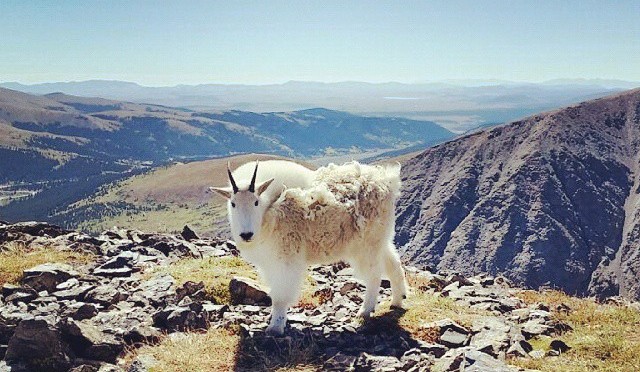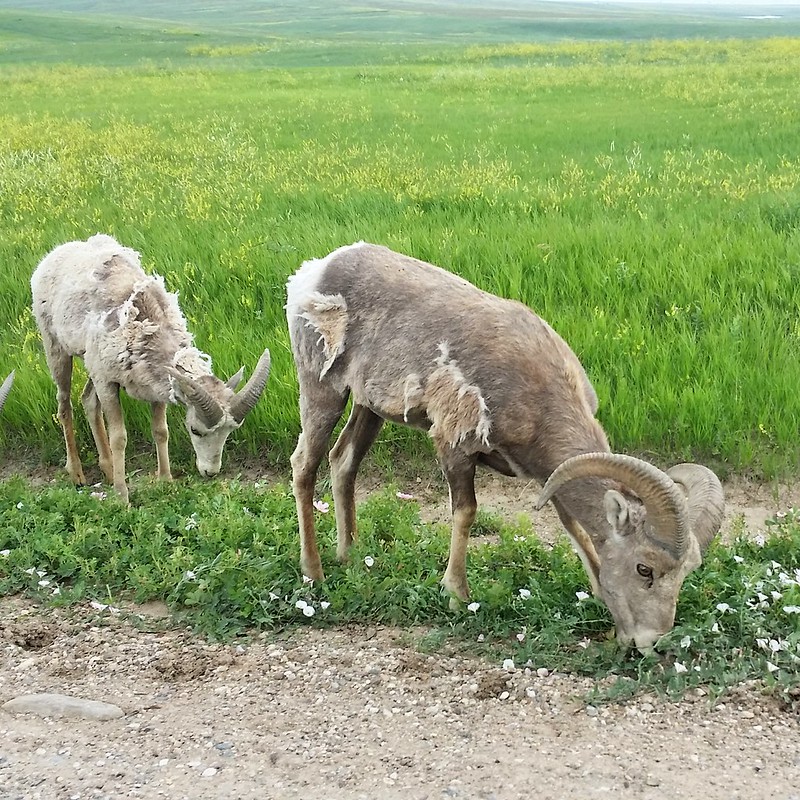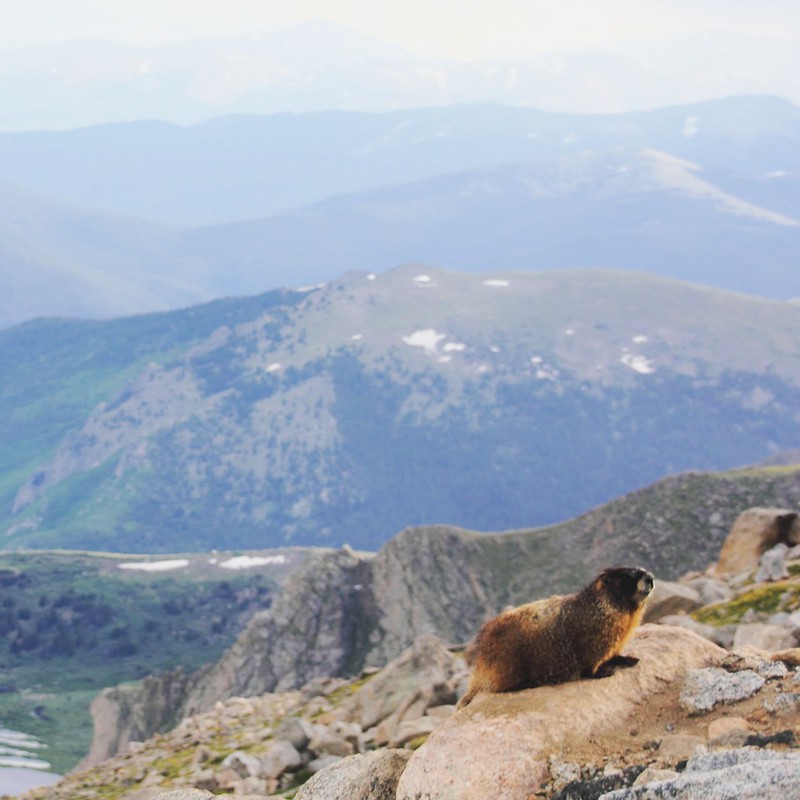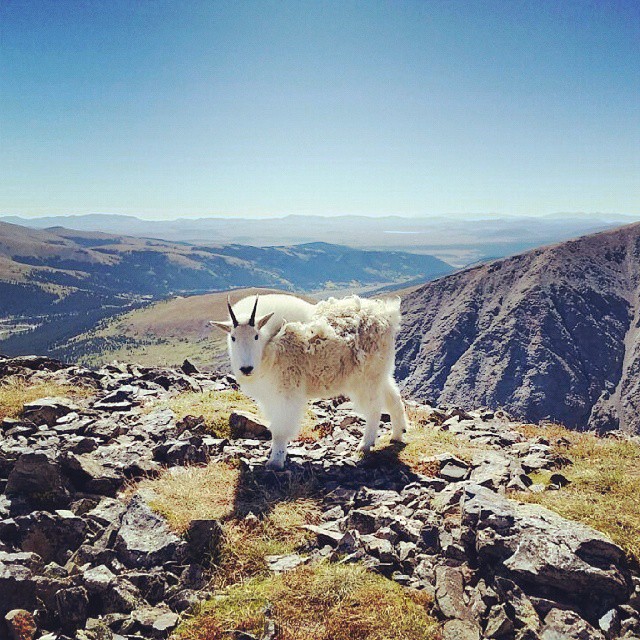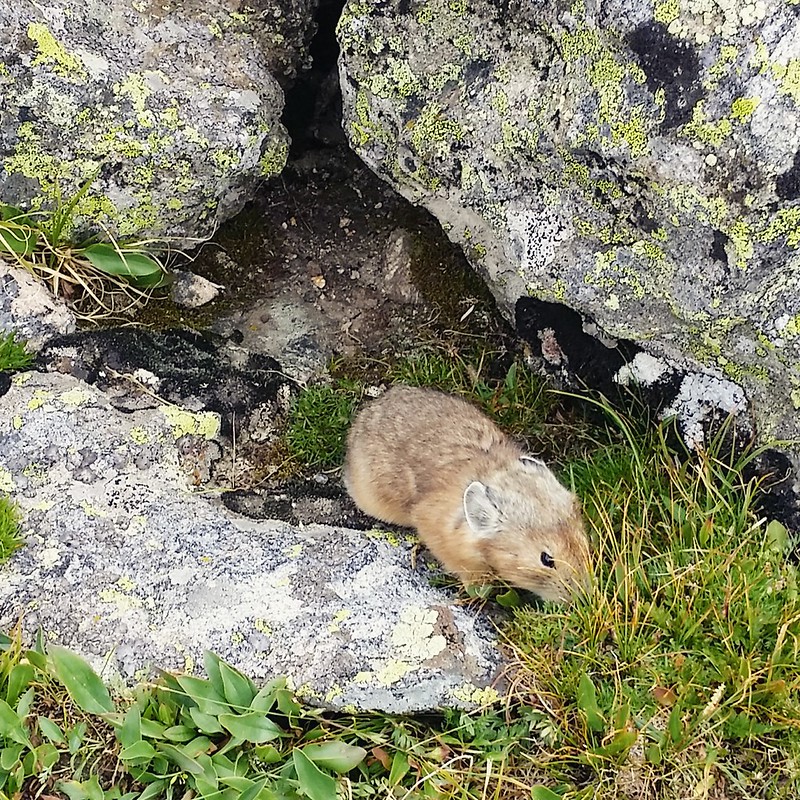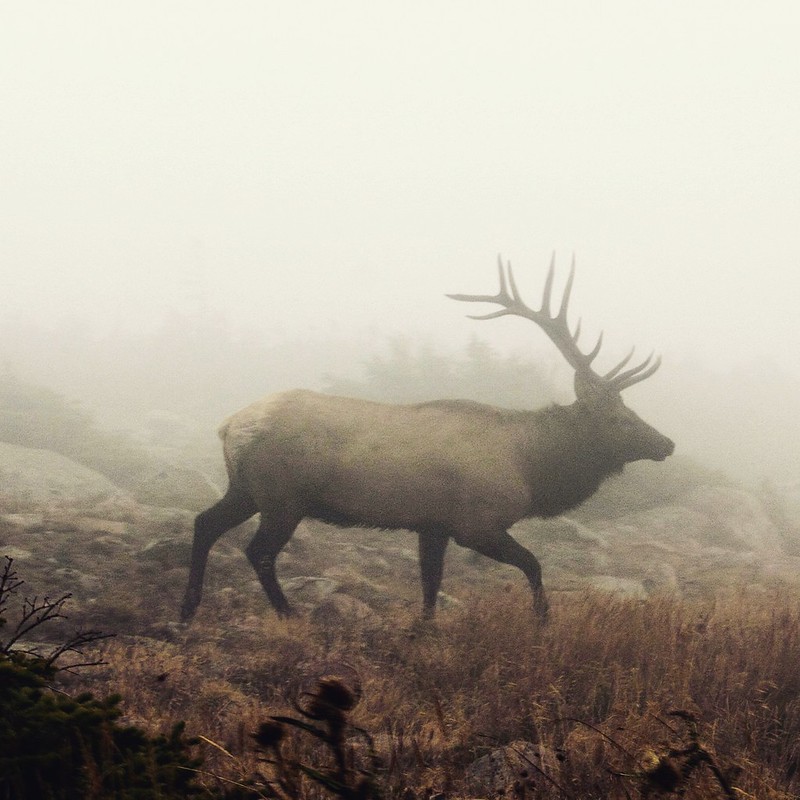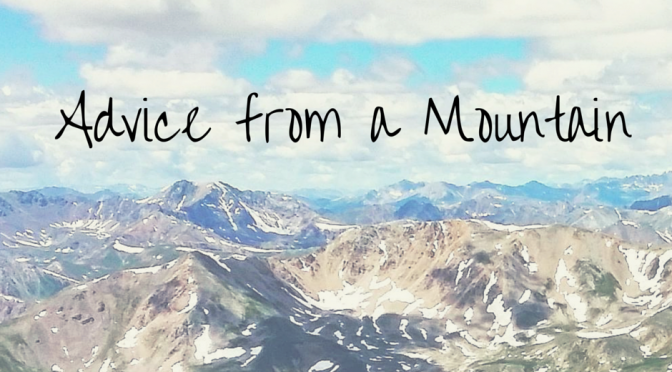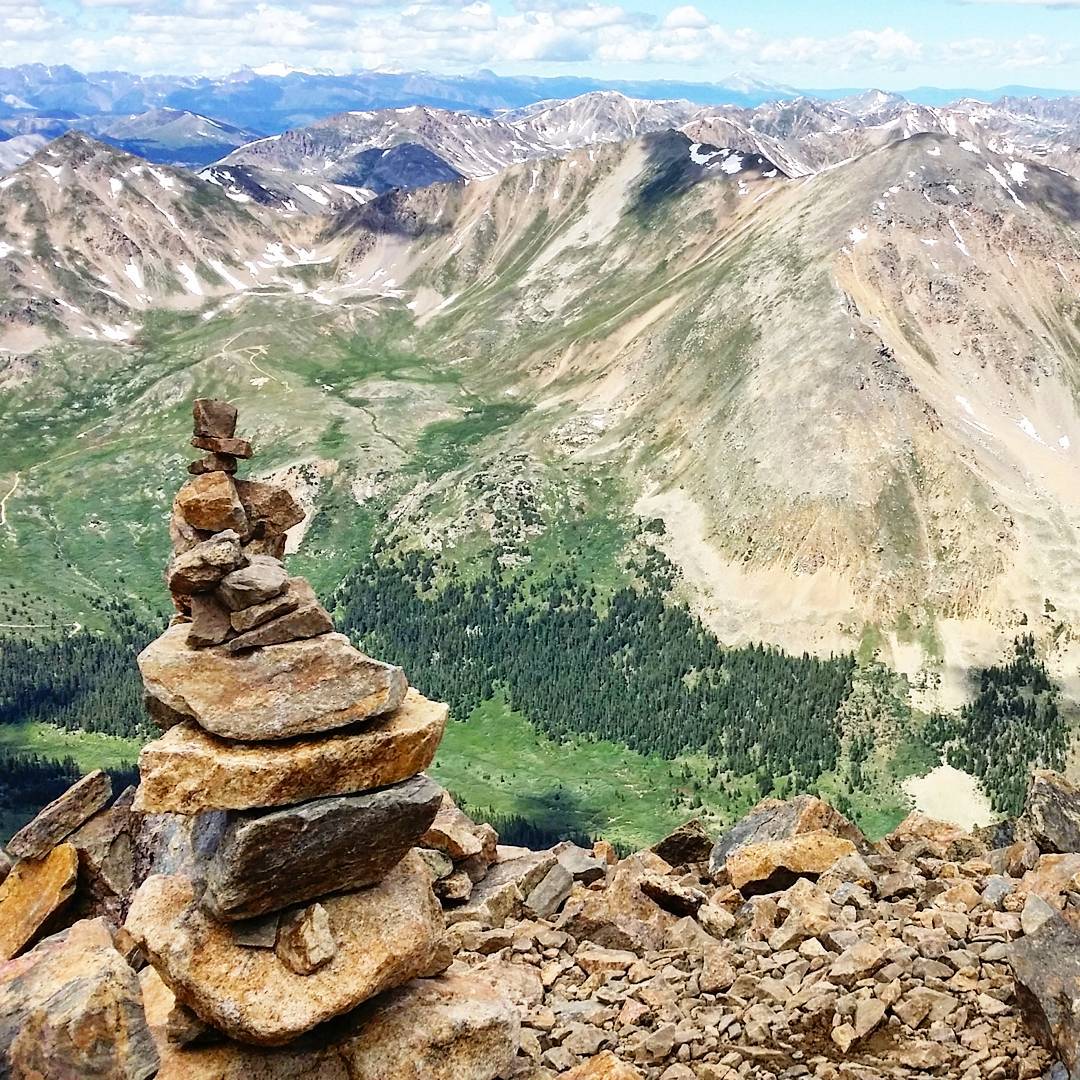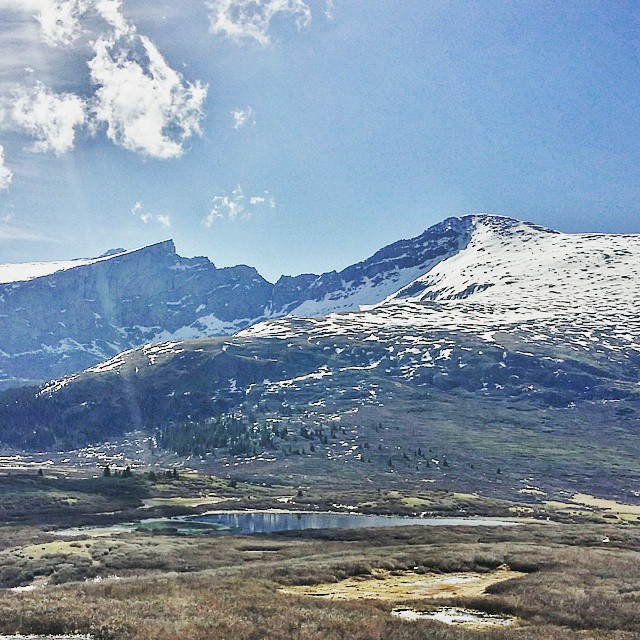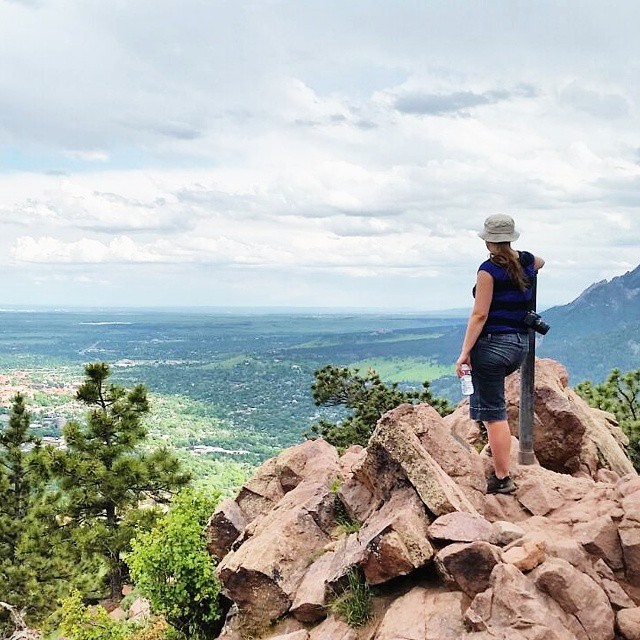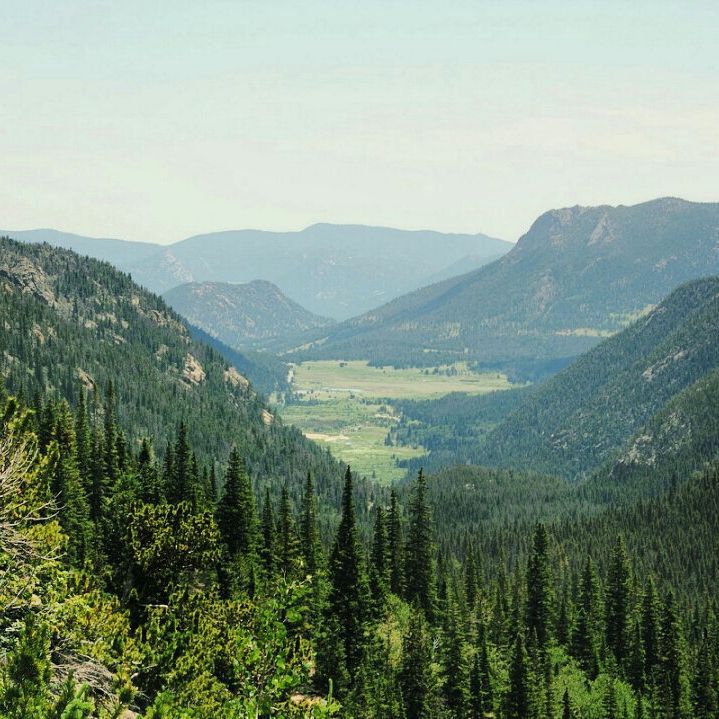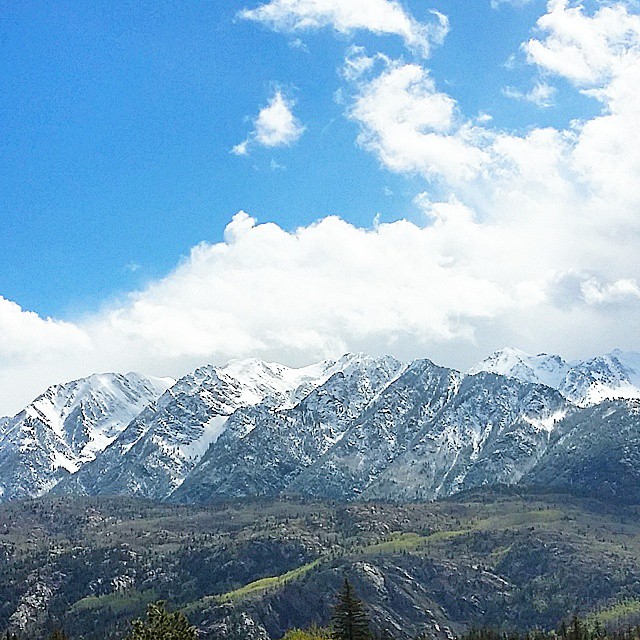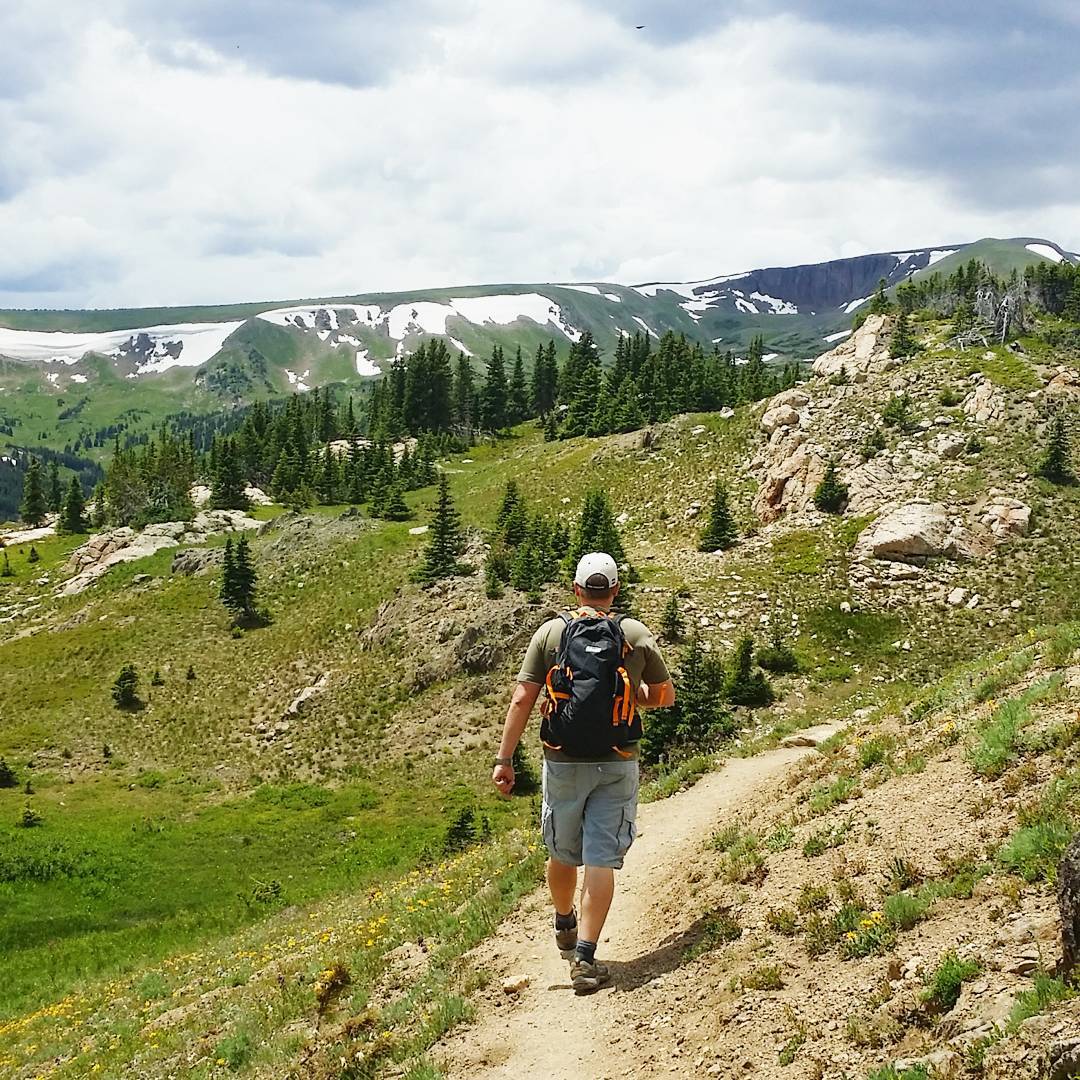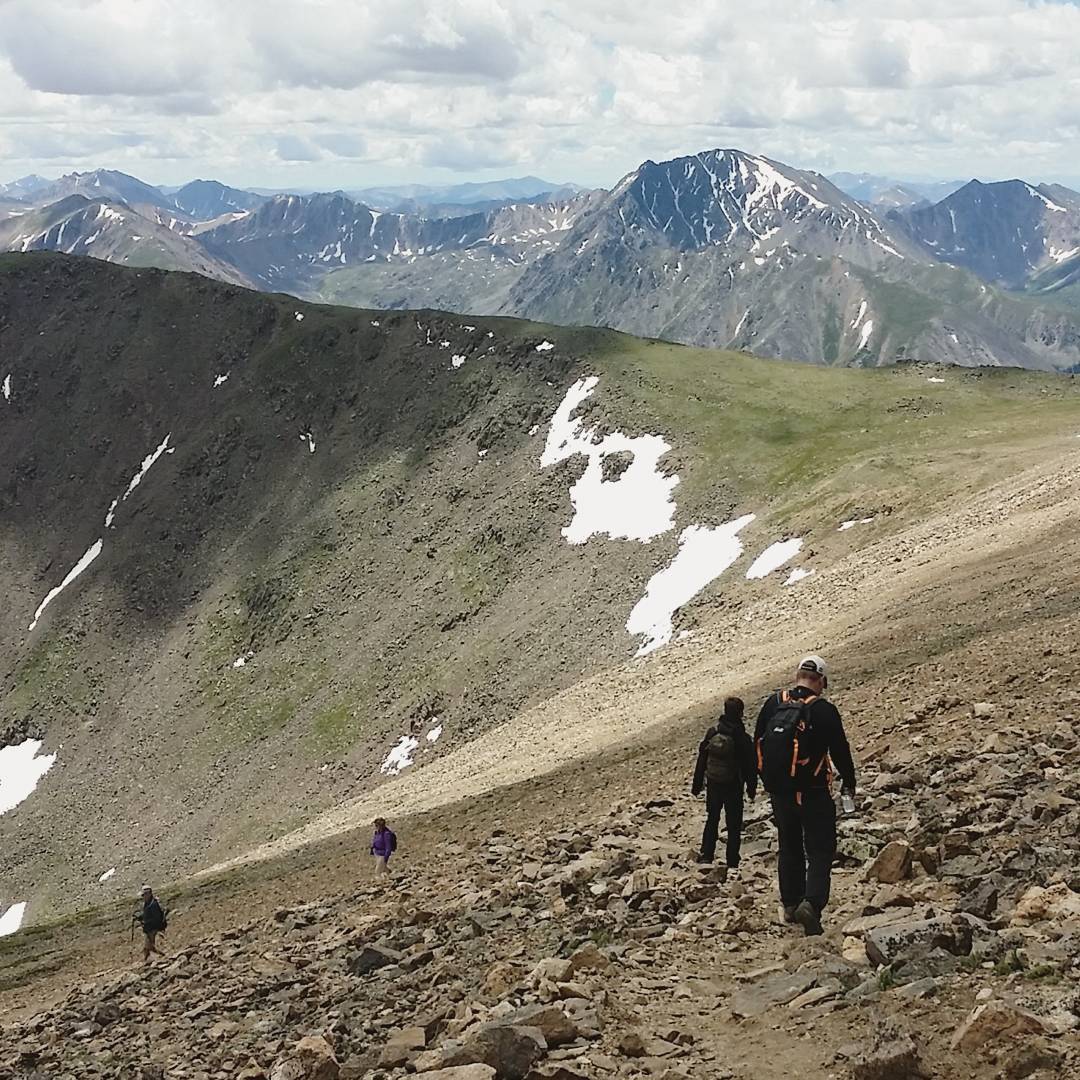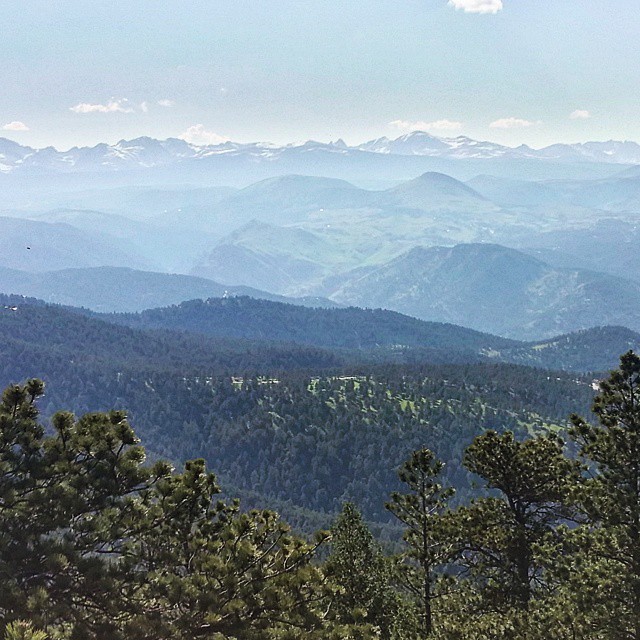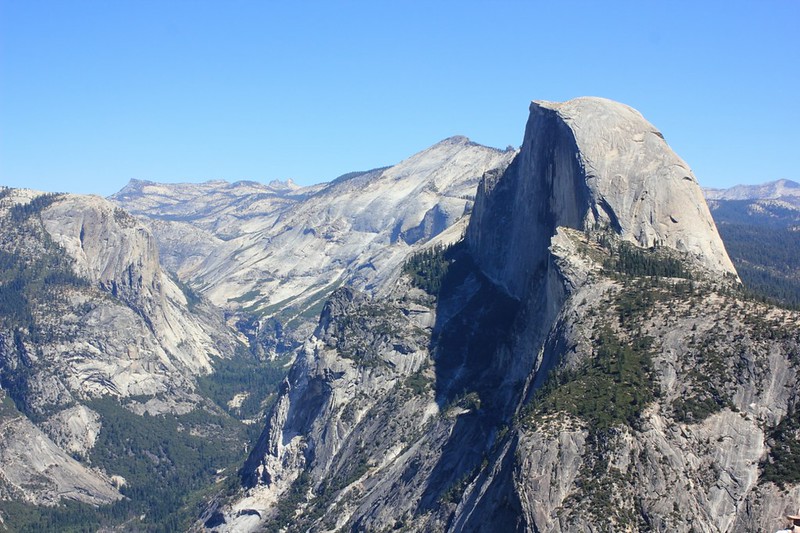
I don’t remember exactly how we got the idea to hike Yosemite’s Half Dome. I think I spotted the hike in some magazine, and although I’d never heard of it before – hey, I’m from Europe! – we were already planning an adventure to California and it sounded like it would fit right in. While researching, I ran across an article in Backpacker, calling it one of the most dangerous hiking routes in the US, and that sounds kinda cool, doesn’t it?
In order to do the hike, you need to take part in the Half Dome Permit Lottery, arranged around March each year, and if you’re lucky, you’ll win a permit to hike up those cables. There’s a limit of one ticket per person, so we put in two, and one of our tickets won a permit that covers a maximum 6 hikers. I recommend putting in more than one ticket if you really want to do this!
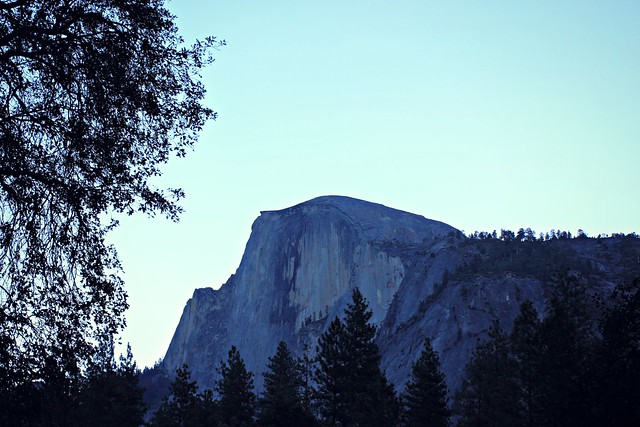
We stayed the night before our climb at Curry Village tent cabins, a very short way from beginning of the trail. We were aiming to start off before sunrise, but we made the mistake of not preparing with our own breakfast and had to wait until 7am to get some from Curry Village’s Coffee Corner. (They have pretty good lunch bagels you can pack as take-away on your hike!) If you’re coming from sea level, sleeping in Yosemite Valley is a good idea to get yourself at least a bit accommodated to the thinner air.
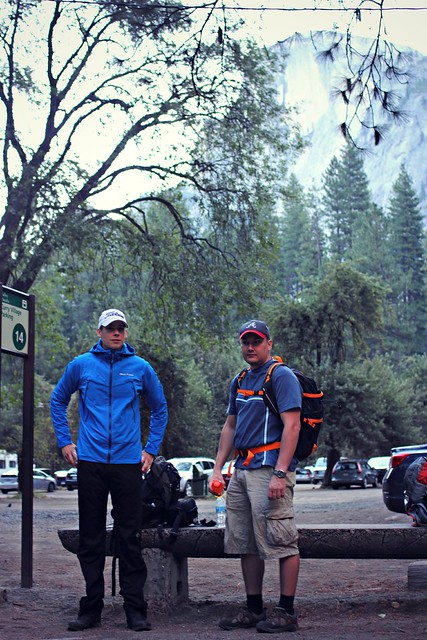
We were three of us on the trail: Iiro, Aki and I. Only Iiro had the courage to leave in shorts, but he made the right choice. In less than an hour, Aki and I were changing our long pants into shorts and packing away our sleeves. It was a great mid-August day with sunshine and warm temperatures predicted for the day, so we were really in luck.
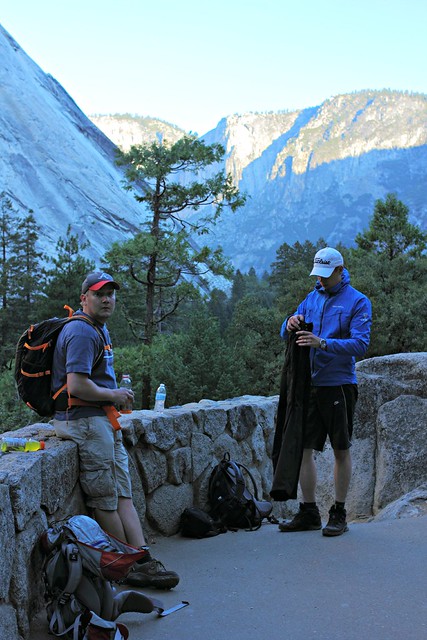
The very beginning of the trail was fairly easy, but it quickly turned into stairs and our calves and quads were feeling it. Unless you’re in really good shape (like Aki was), this is a hike you should train for. I had been a regular at Step classes, hiked along the Ardennes and followed a 6-week program that I can fully recommend. Iiro, living in Georgia at the time, had climbed up Kennesaw Mountain at least once a week. Maybe thanks to our efforts, we passed a group of Asian girls at Vernal Falls – but at the same time, one woman passed us running up the stairs, so we definitely could have been more in shape, too.

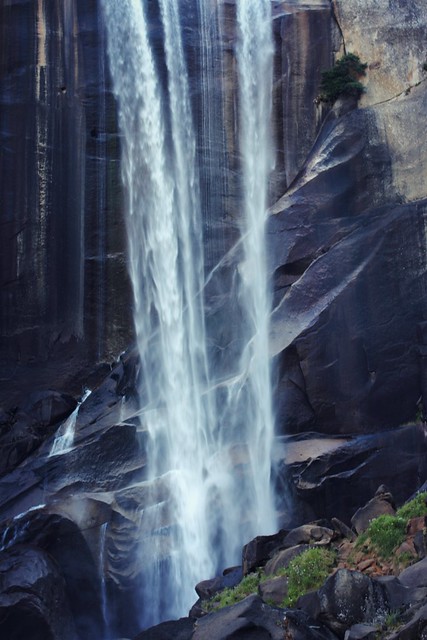
I had trained for the hike with a backpack full of water, and my backpack on the hike ended being around 9kg (20lb). We’d taken with us 6 liters of water per person, and all of us had around two thousand calories worth of nuts, energy bars and trail snack that we stopped to eat around every 45 minutes. This was a pretty good pace for us, because it kept our energy levels high despite the intensive climb, and it also gave us a chance to catch our breath at regular intervals.
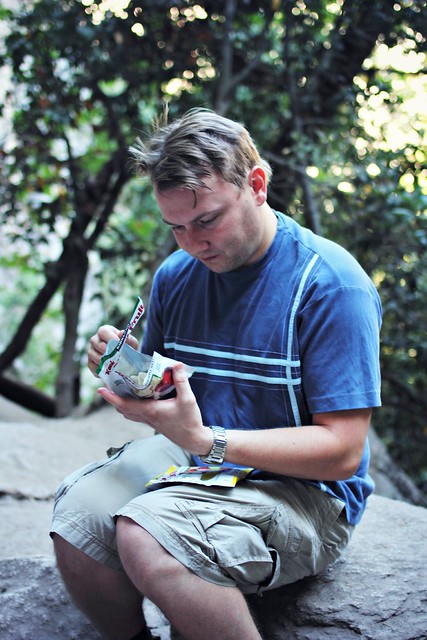
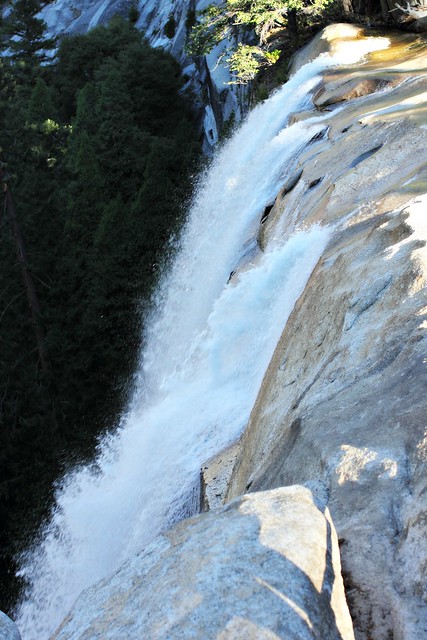
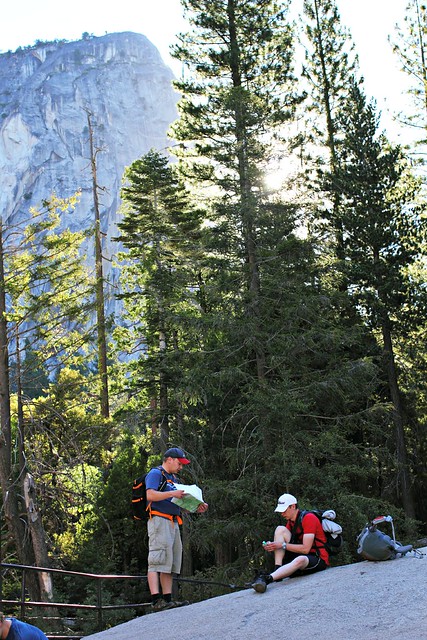
After Vernal Falls, it was a similar effort to make it up to Nevada Falls along some tight switchbacks, but then it got easier. At an altitude of around 1800m, after climbing up 600 meters (around 2000ft) and hiking for 4,2km (around 2.5 miles), all of which took us several hours, we reached Little Yosemite Valley, a flat portion of the trail in a forest which felt like dancing on clouds compared to the climb we had just done. At this point, we finally saw Half Dome for the first time after leaving the trailhead.
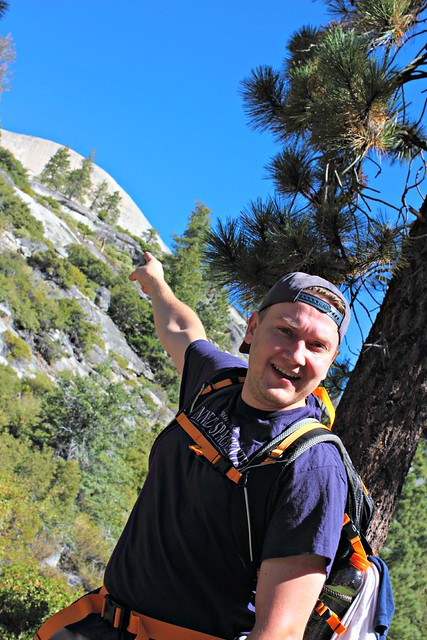
After a couple kilometers in the valley, the trail continued climbing up. All the while we’d seen other hikers on the trail, but now we really started reaching slower hikers who had left already before dawn. Considering how tough the trail was, it was surprising that the hikers ranged from kids to retirees and everyone in between. All the better to them!
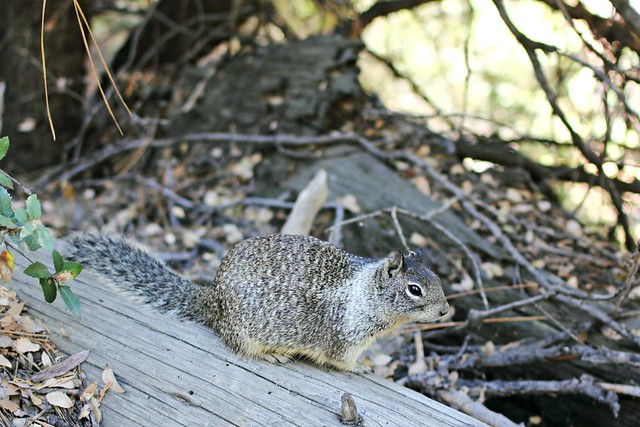
The last official toilets we’d seen were at Nevada Falls, so potty breaks in the bushes were a thing at this point (and if you don’t need them, you haven’t drunk enough water). And here’s a word of warning to you: while I was doing my business in the woods, I heard a buzzing noise, and then a horrible pain in my bicep. I didn’t stay to figure out what kind of insect had bit me, but instead I got back to the trail as fast as I could and for a while could just lay in the ground trying to wish the pain away. We had some ibuprofen with us, which took a while to settle in, but antihistamine would have been an even better addition to our first aid kit.


When we finally reached 2300m, the views really opened up. We were a bit worried to see dark clouds in the horizon, because the rule is that you should never climb Half Dome if there’s any sign of thunder on the horizon: the mountain attracts lighting to it like honey attracts bees, and several hikers have died in lightning strikes. This is also why you should reach Half Dome before noon, because afternoon thunderstorms are common in the area. We only reached the check point at half past noon, and I’d say that’s around as late as you should get there without turning back.
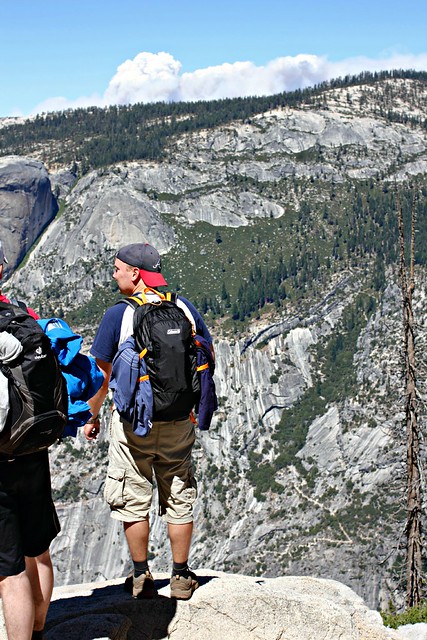
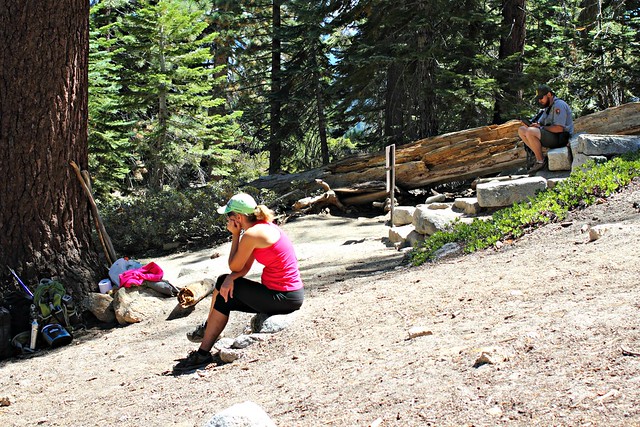
At the ranger check point, we rested for a while and prepared for the final ascent: summiting Half Dome. First 150m (500ft) were a tougher-than-tough climb, the latter 150m were pure crazyness.
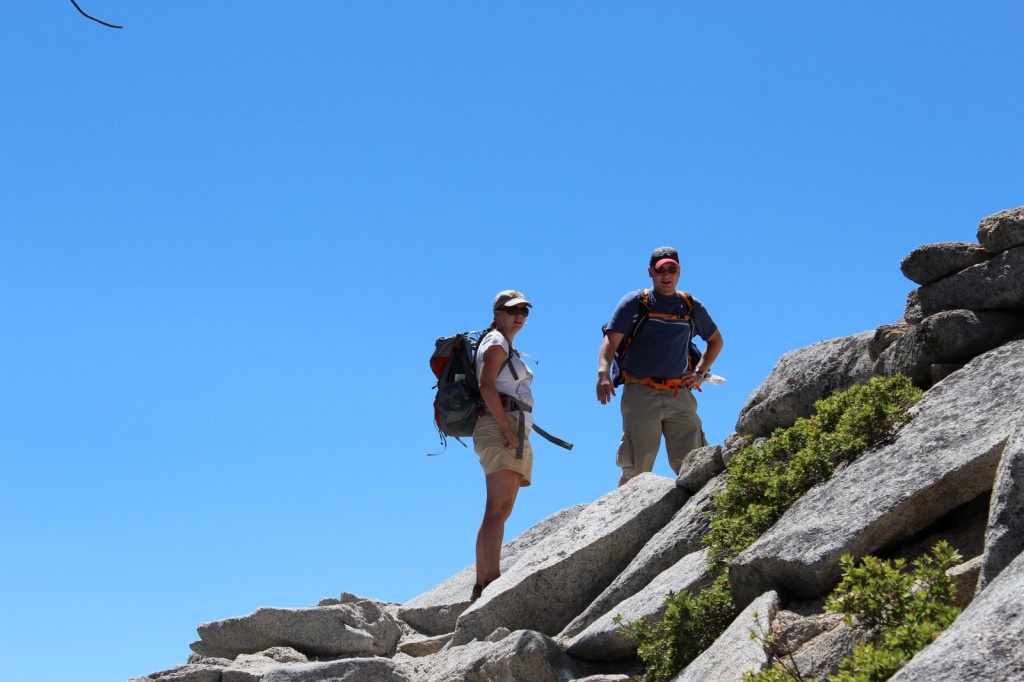
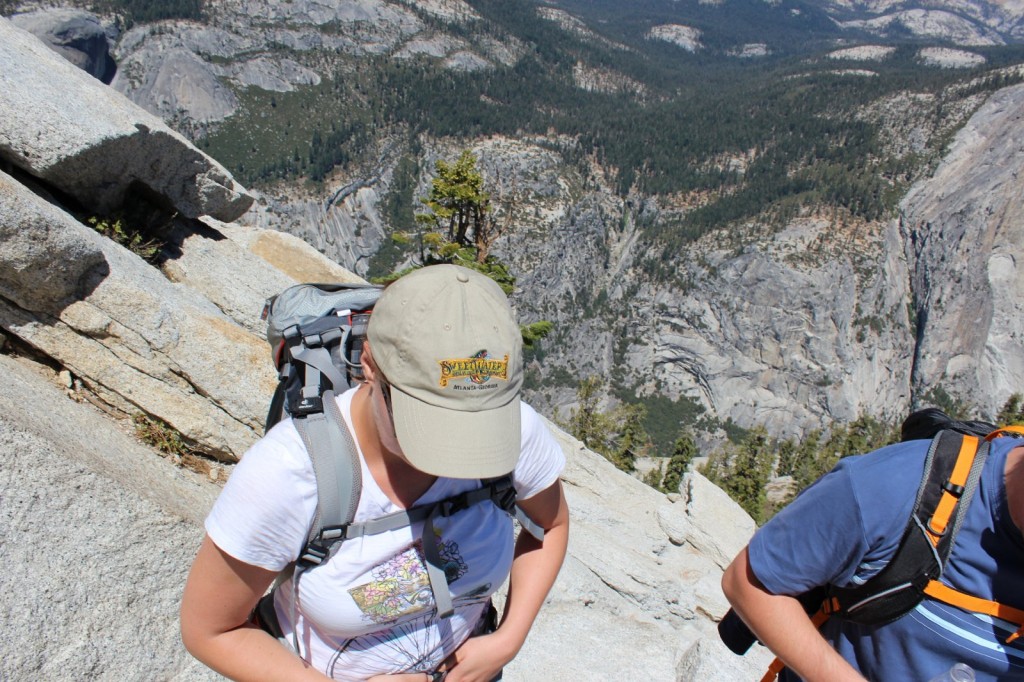

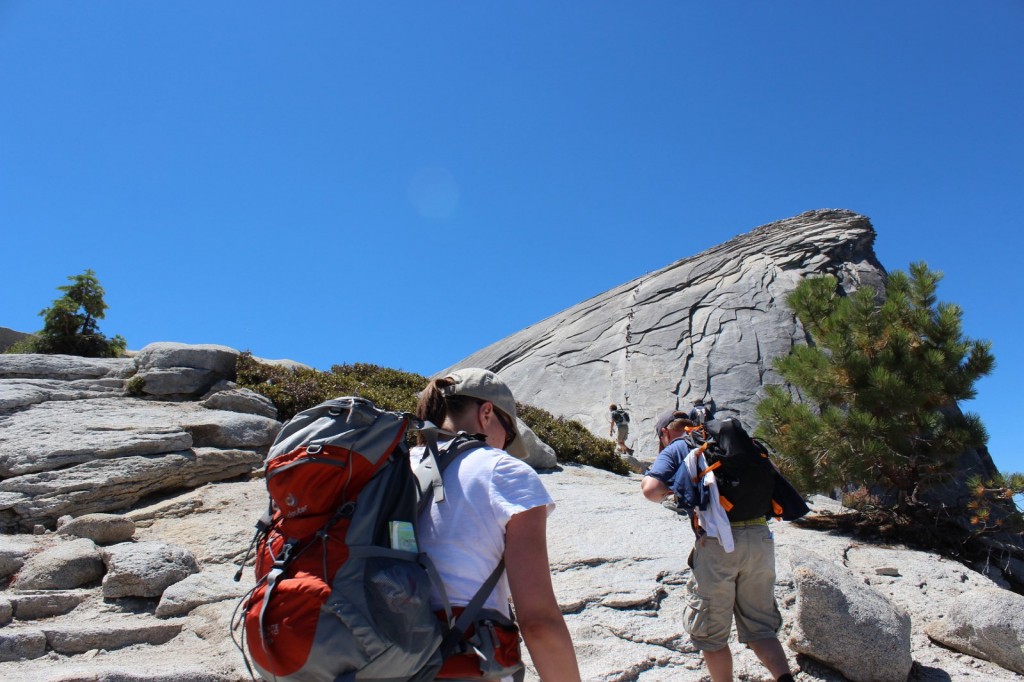
The reason why Half Dome is one of the most dangerous hiking routes in the US is the last 150m meters of it: The Cables. Sure, you could sprain your ankle, fall and hit your knee or suffer from dehydration on other portions of it, but if you fall at the Cables, you fall down. Like really down. Like almost a mile down. Basically, it’s a “make a mistake and die”-portion: you hold on to two cables that ascend up the rock at a 70 degree angle at its best. Every couple meters, there’s a wooden plank where you can stay for a moment and catch your breath, but not for long because there’s people behind you who want to get up – and other people descending the same route.
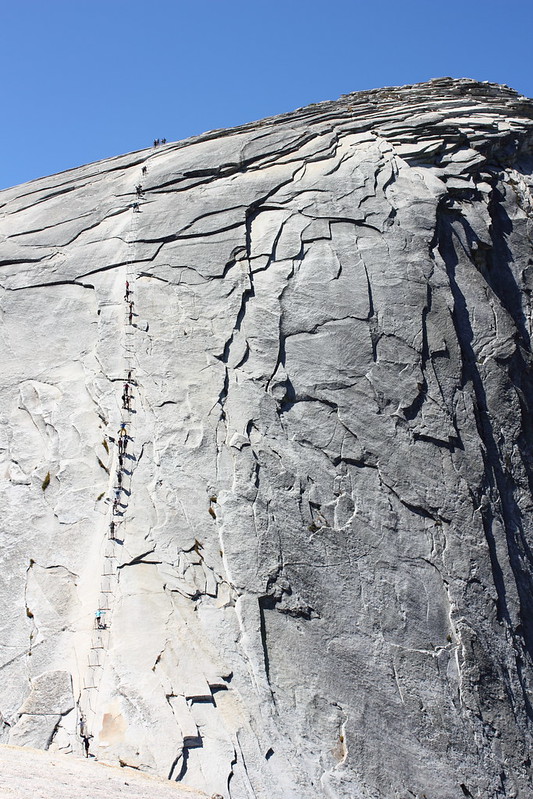
The wind at the Cables was so strong it was hard to stay upright, and all around me the rock plunged into sure death. From the switchbacks, I crawled on all fours towards the Cables, until I got behind a large boulder and broke down: I can’t! This is horrible! There’s no way I’ll get up there, I’ll just slip and fall and die! This is it, I’m done!
“No you’re not, you can do it,” Iiro told me and after a moment of coaching got me to continue. “Just keep your wits about you, hold on, and if you slip, I’ll catch you.”

Climbing up was tough but in the end, not as nerve-wrecking as I had thought. I had bought some garden gloves from the internet which had perfect grip and slowly but surely a foot at a time I ascended. At the Cables, you really don’t have time to fear, because all your concentration will go into the climb itself: always one hand at the cables, passing by people coming the other way, going from plank to plank. I tried at first to hold on to both cables, but soon I let go of the other one and just hung on to one with both hands, holding it under my arm and pulling myself up.
You can do it, almost there, coming down is easier, the hikers descending kept telling me, and before I knew it, the rock started leveling out, and the planks and the cables ended. A couple more meters of crawling on all fours, and then I was there.

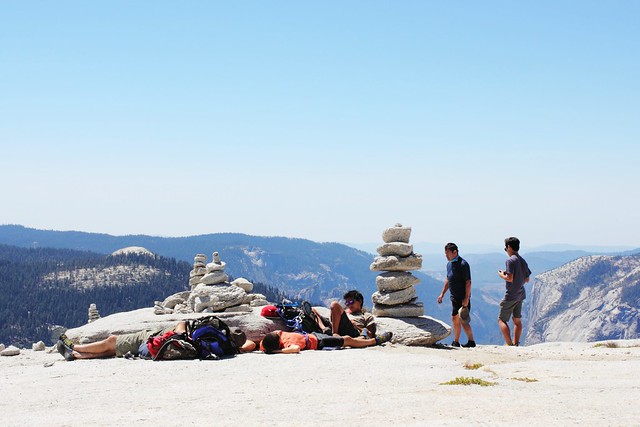
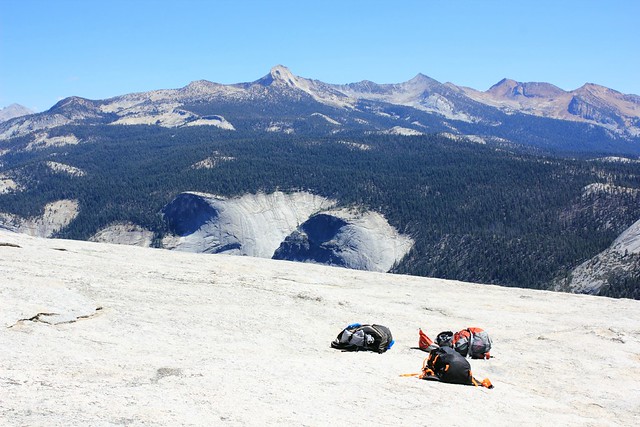
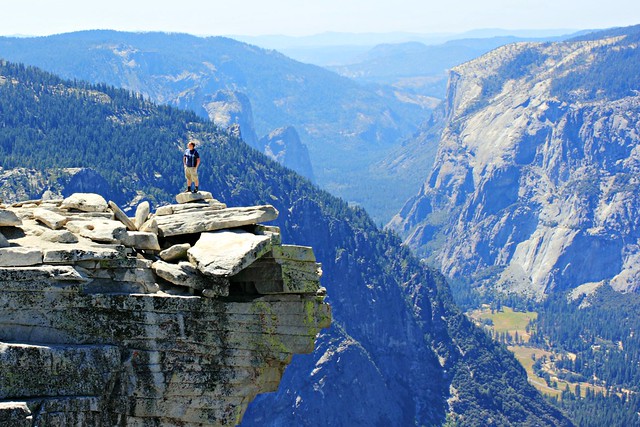
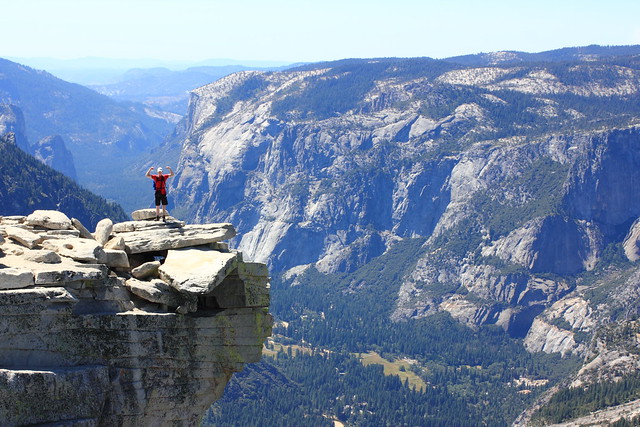
All of the celebrational photos here feature just Aki and Iiro, running around the summit, taking photos and eating a relaxed lunch with the best feeling ever: we did it! I, on the other hand…
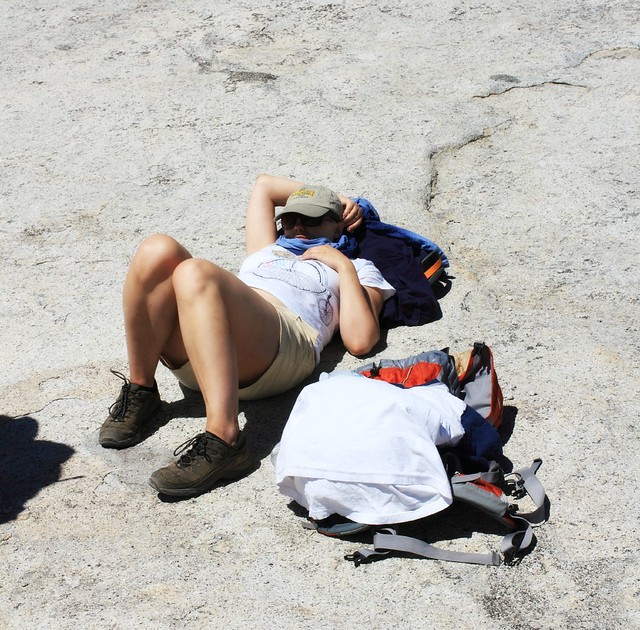
After all that stress and exhaustion, I was feeling dizzy and felt like throwing up. My head hurt, stomach hurt, I could eat less than half of my lunch and most of the time at the summit I spent laying down as still as possible and trying to calm my raising heart. Every once in a while I peeked under the scarf on my head to take a look at the views, and yeah, despite my feeling, this was still worth it.

The descent really was easier than the ascent. Aki even got some photos of it, which was nice, because I would never have taken my hand off the cables.
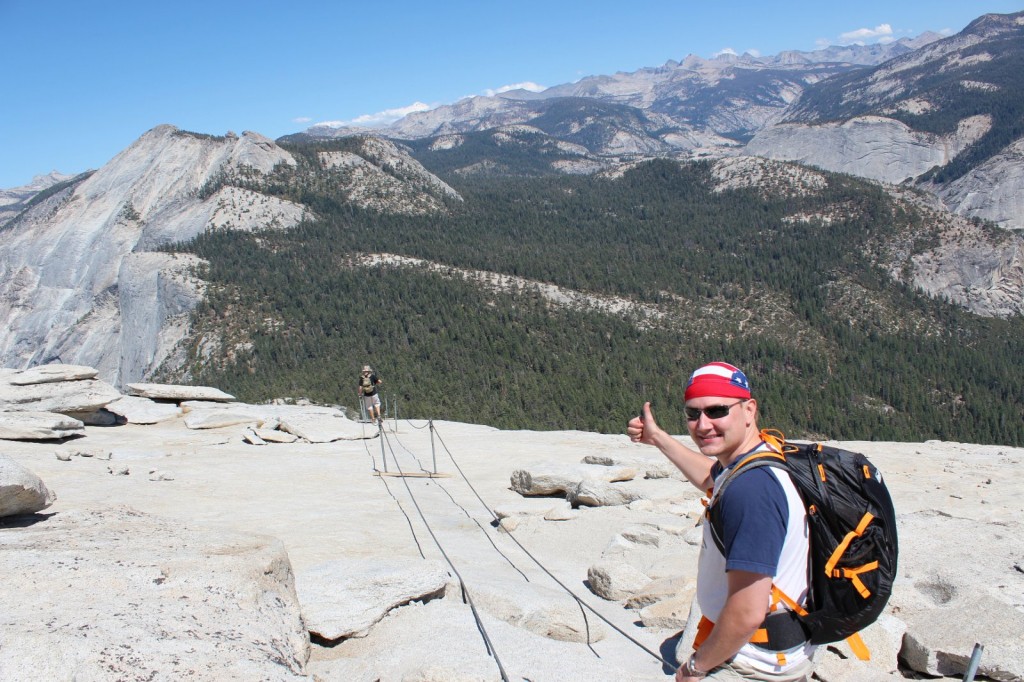
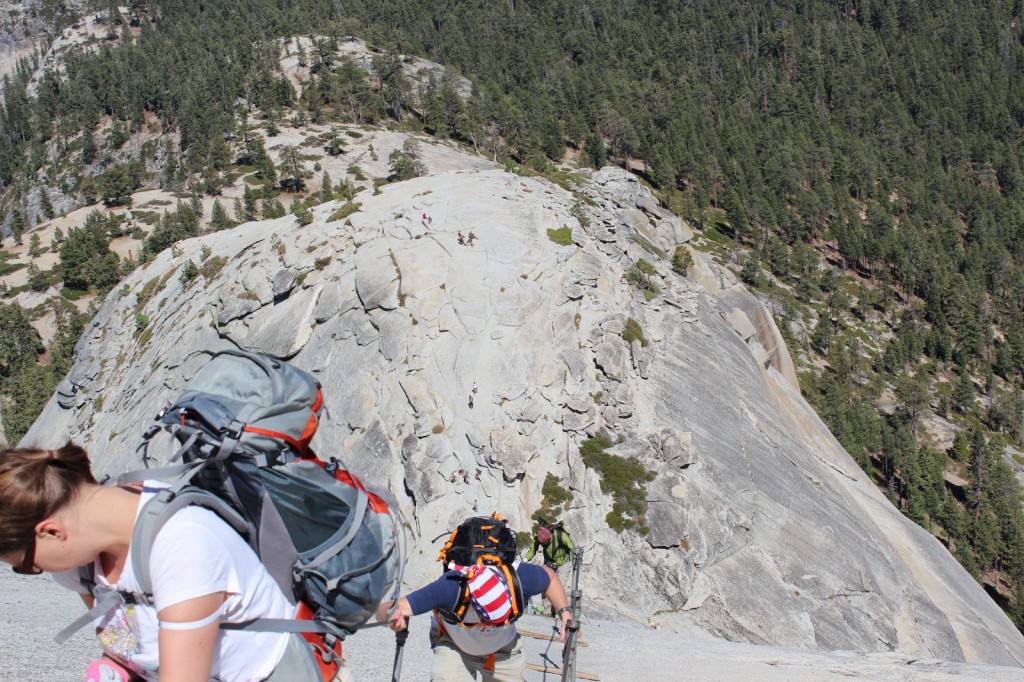
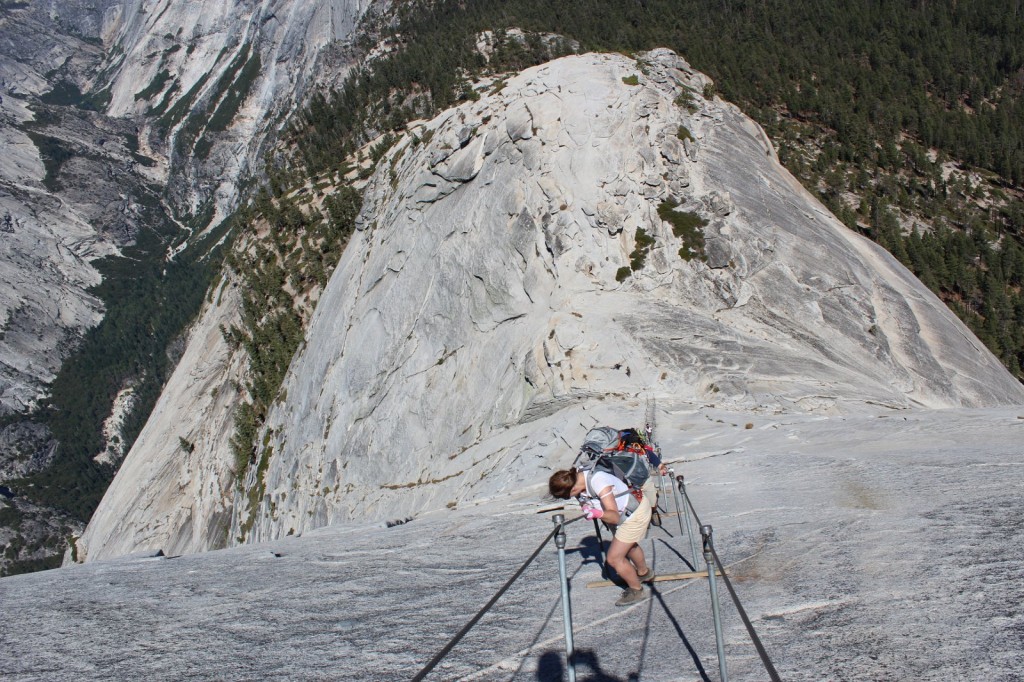
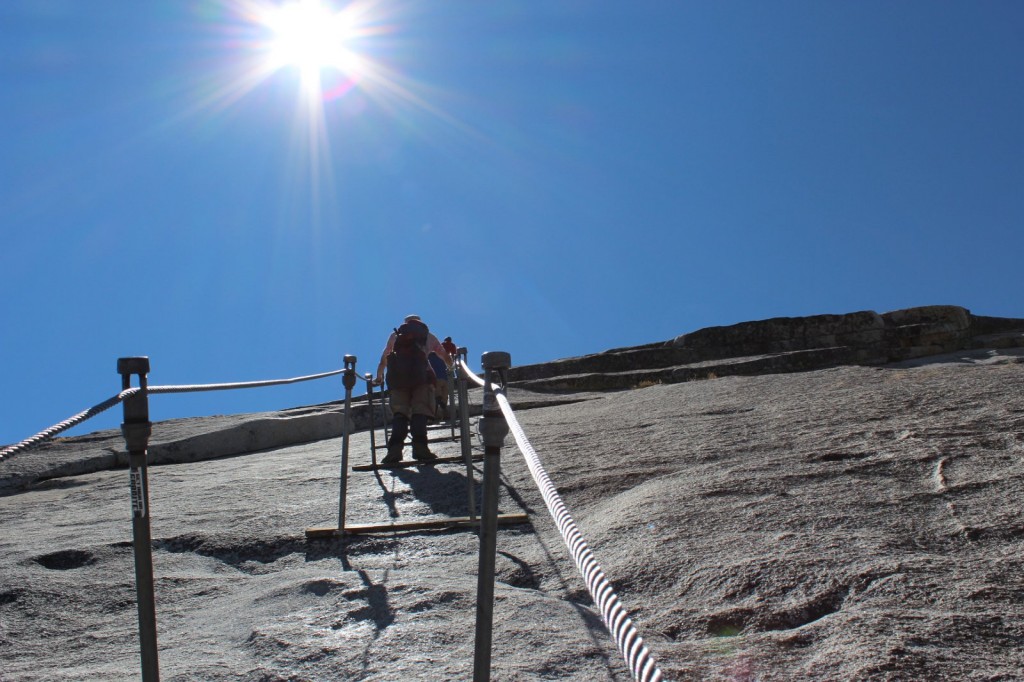
When we finally got down, it was like a weight coming off my shoulders. That was the hard part, now it was just a 7 mile hike to the bus stop.
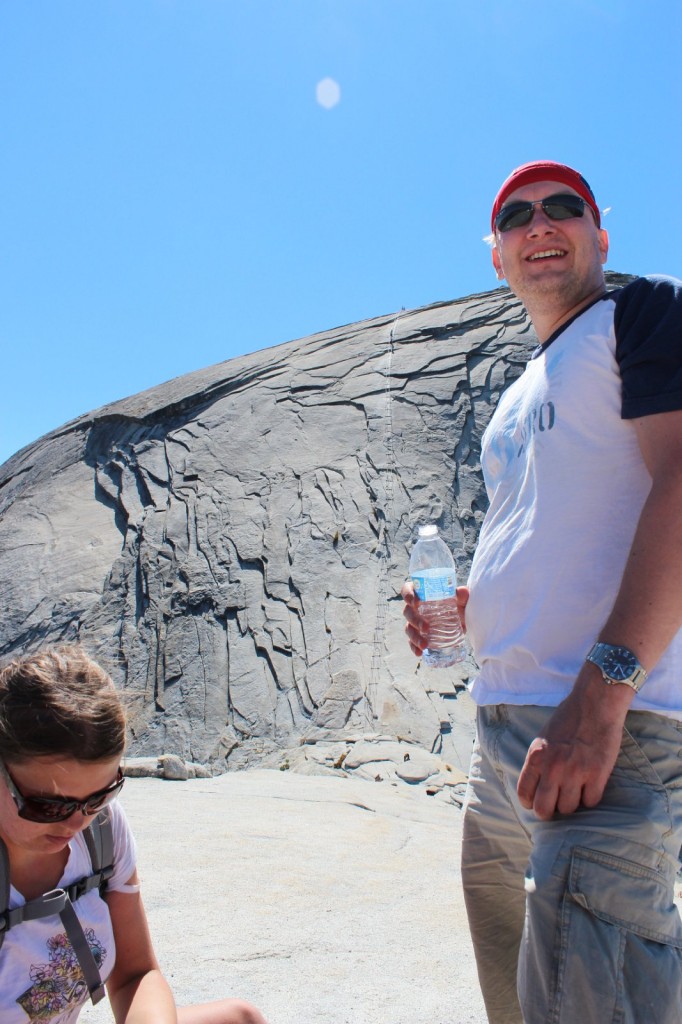
There’s not much to tell from the way down. Climax of the trip was over, and now we just wanted to get to camp as soon as possible to rest our feet and enjoy a couple victory beers. I think I was the most energetic of us, having gotten over my fit of nausea. Aki had a blister on his foot and Iiro had spent his last drops of energy getting down the cables.
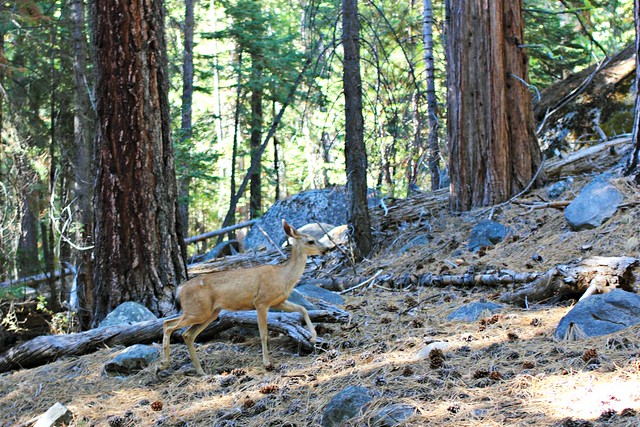
We had all felt the day in our knees, so instead of taking the stairs down, we took the longer John Muir Trail that wasn’t as steep. Now I wouldn’t make the same choice again, because those two extra kilometers with the setting sun and running out of drinking water (yes, we all did – take more than 6 liters on a hot day) felt reeeeaally loooong, and to top it off, we got a bit lost. We finally made it back to camp around 7.30pm, exactly 12 hours after we’d left. Pizza had never tasted as good.
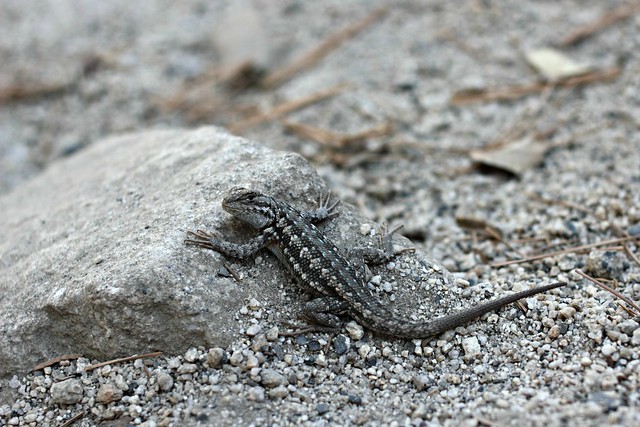
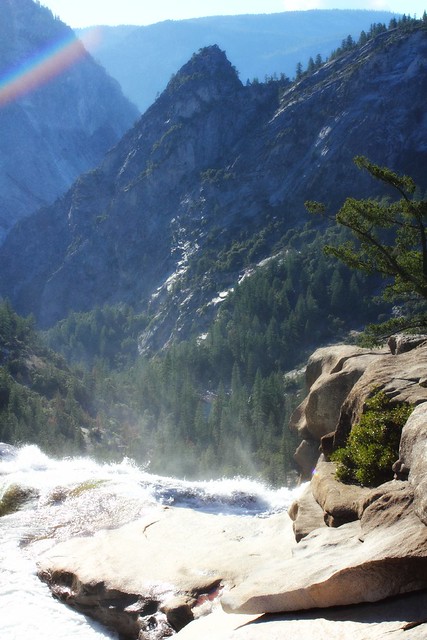
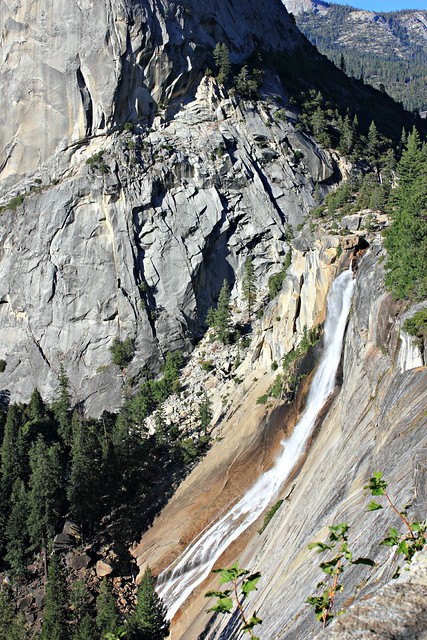
25 kilometers back and forth, 1500 meters of ascent, and 12 hours on the trail. This is probably the craziest and most dangerous thing I’ve ever done, and I’ve also jumped from an airplane. It’s also one of the most beautiful hikes I’ve done
Would I go again? I doubt it. I think this will be a once-in-a-lifetime experience for me, and that was really what it was. But you should go! Start planning your next summer’s adventure and, come March, take part in the lottery. And then train, prepare, train, and hike. You won’t regret it. Good luck!
